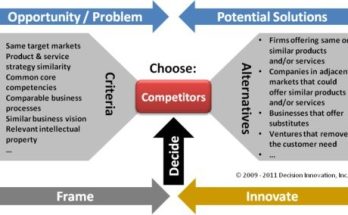Insurance decisions are often made under pressure—during life transitions, after major purchases, or in response to emerging risks. Yet the most effective insurance choices are rarely impulsive. They are the product of thoughtful reflection, a process that allows individuals and businesses to align coverage with values, priorities, and long-term goals. Reflection brings clarity to complexity. It transforms insurance from a reactive necessity into a deliberate strategy, one that supports resilience, continuity, and peace of mind.
At its core, reflection is about asking the right questions. What am I trying to protect? What risks am I willing to accept? How do my current policies support my broader financial or operational objectives? These questions may seem simple, but they require honest introspection. A business owner, for instance, might reflect on how a growing digital footprint introduces new vulnerabilities. That reflection could lead to a reassessment of cyber liability coverage, ensuring that the company is prepared for threats that didn’t exist a few years ago. Without pausing to consider how the landscape has changed, the business might remain exposed, relying on outdated assumptions and insufficient protection.
Reflection also helps uncover blind spots. Insurance is often purchased based on immediate needs or perceived obligations, but those decisions may overlook less obvious risks. A family might carry homeowners and auto insurance but neglect disability coverage, assuming that health insurance is sufficient. Only through reflection—considering what would happen if a primary earner couldn’t work—does the gap become clear. This kind of insight doesn’t come from a checklist; it comes from stepping back, imagining scenarios, and evaluating the ripple effects of disruption. It’s a process that requires time, attention, and a willingness to confront uncomfortable possibilities.
In business, reflection enhances strategic alignment. Insurance decisions should not exist in a vacuum—they should support the organization’s mission, values, and growth plans. A company expanding into new markets might reflect on geopolitical risks, supply chain dependencies, or regulatory changes. These reflections inform the selection of policies that protect investments and ensure continuity. Moreover, they foster a culture of proactive risk management, where insurance is seen not just as a safeguard but as a tool for enabling innovation. When leaders take time to reflect, they make choices that are not only protective but empowering.
Reflection also deepens relationships with insurance providers. When clients come to the table with clear intentions and thoughtful questions, insurers can respond with tailored solutions. The dialogue becomes collaborative rather than transactional. For example, a nonprofit organization might reflect on its evolving donor base and community engagement strategies. By sharing these insights with its insurer, the nonprofit can explore coverage options that address reputational risk, event liability, or data protection. This level of engagement builds trust and ensures that policies are relevant, responsive, and aligned with real-world dynamics.
Technology can support reflection, but it cannot replace it. Digital platforms offer convenience, comparison tools, and automated recommendations. These features are valuable, especially for routine decisions. However, they can also create a false sense of confidence, encouraging users to select policies without fully understanding their implications. Reflection adds depth to the process. It prompts users to look beyond price and coverage limits, to consider how a policy fits into their broader life or business strategy. It’s the difference between choosing insurance and choosing wisely.
The emotional dimension of reflection is equally important. Insurance decisions often intersect with moments of vulnerability—starting a family, launching a business, facing health challenges. Reflection allows individuals to process these emotions, to move from fear or uncertainty toward clarity and control. A person considering long-term care insurance, for example, may initially feel overwhelmed by the options and implications. Through reflection, they can explore their values, consult loved ones, and envision the kind of support they want in the future. The result is a decision that feels grounded, intentional, and aligned with personal priorities.
Reflection also encourages periodic review. Insurance needs are not static, and policies should evolve with changing circumstances. By setting aside time to reflect—annually, or during major life or business milestones—individuals and organizations can ensure that their coverage remains relevant. This habit prevents complacency and supports continuous improvement. It’s not about second-guessing past decisions; it’s about honoring the present and preparing for the future with fresh eyes and renewed insight.
Ultimately, the power of reflection in insurance decisions lies in its ability to connect the dots. It bridges the gap between risk and resilience, between uncertainty and confidence. It transforms insurance from a reactive purchase into a thoughtful plan. In a world where complexity and change are constant, reflection offers a moment of pause—a chance to think deeply, act wisely, and protect what matters most. Whether for individuals, families, or businesses, that pause can make all the difference. It’s not just about coverage; it’s about clarity. And that clarity is what turns insurance into a truly strategic choice.



